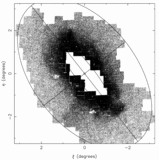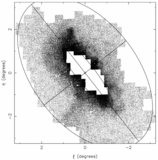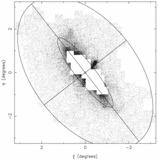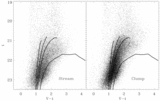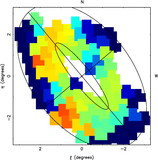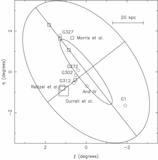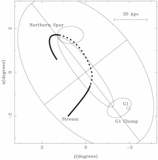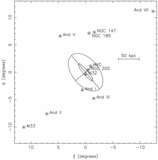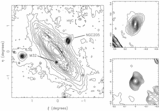Image Details
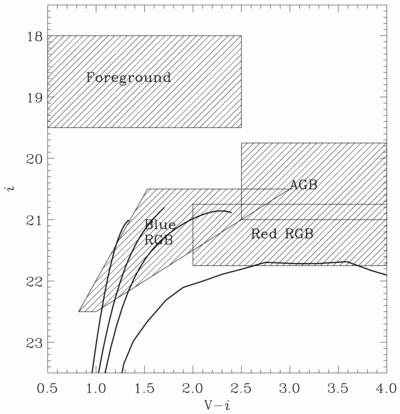
Caption: Fig. 1.
Selection criteria adopted to isolate stars in different regions of the color‐magnitude diagram. The blue RGB (20.5 < i < 22.5; 8.7−0.4i < V−i < 23.5−i) and red RGB (20.75 < i < 21.75; V−i > 2.0) cuts are designed to select stars from the metal‐poor and metal‐rich sides of the red giant branch, respectively. The AGB cut (19.75 < i < 21.00; V−i > 2.5) is designed to select intermediate‐age, moderate‐metallicity stars in the thermally pulsing regime of the asymptotic giant branch. Field‐to‐field corrections for the varying Galactic foreground population (see § 3.2) are calculated using star counts in the region defined by 18.0 < i < 19.5 and 0.5 < V−i < 2.5. Also overlaid are the giant branch fiducial sequences of several Galactic globular clusters: left to right, NGC 6397 ([Fe/H] = −1.9), NGC 1851 ([Fe/H] = −1.3), 47 Tuc ([Fe/H] = −0.7), and NGC 6553 ([Fe/H] = −0.3), taken from Da Costa & Armandroff (1990) and Sagar et al. (1999). These sequences have been adjusted to an adopted M31 distance modulus of 24.47 (Holland 1998; Durrell et al. 2001) and a reddening of ﹩E( B{\mbox{﹩-﹩}} V) =0.07﹩. A distance modulus of 13.7 and intrinsic reddening of ﹩E( V{\mbox{﹩-﹩}} I) =0.95﹩ was assumed for NGC 6553 (Sagar et al. 1999). In placing the fiducials on the (V, i) plane, we have made use of the color equations derived for the WFS data.
Copyright and Terms & Conditions
© 2002. The American Astronomical Society. All rights reserved. Printed in U.S.A.


